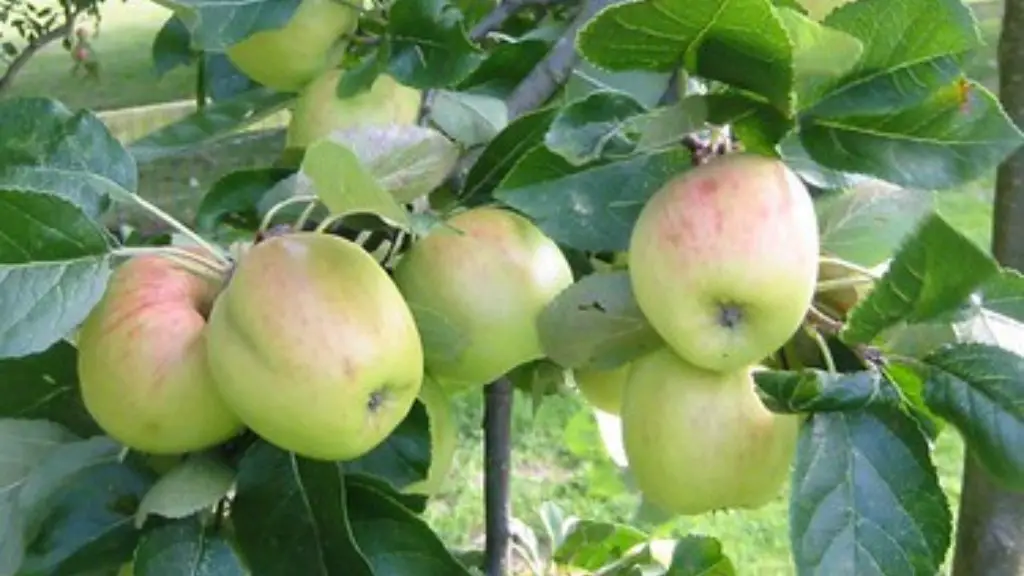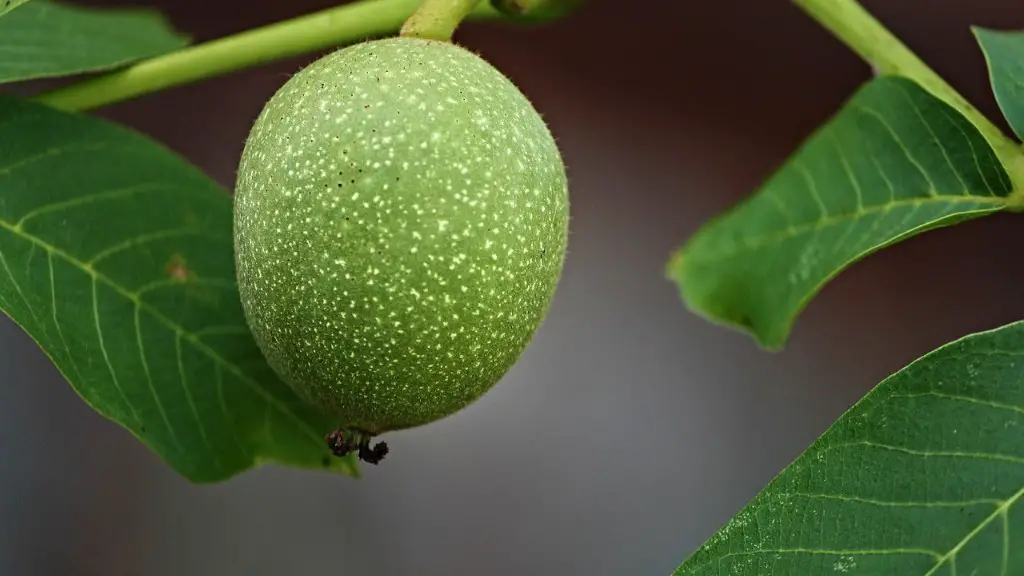Typically, apple trees take about four to five years to produce fruit. If your apple tree has not flowered in that period of time, you may have cause for concern. There are several reasons why an apple tree might not blossom, ranging from insufficient climatic conditions, to poor rootstock, improper pruning, and lack of pollination. Therefore, it is necessary to understand the underlying factors behind an apple tree’s failure to blossom.
Inadequate sunlight is one of the most common issues why an apple tree fails to bloom. Apple trees should receive at least six to eight hours of direct sunlight each day to produce flower buds. If your apple tree is located in a shady spot, its chances of flowering and fruit production are drastically diminished.
Another issue that may prevent an apple tree from blossoming is incorrect pruning. An apple tree should be pruned during the first three to four years after planting to encourage its development. Pruning during the fruiting season, however, will stop flower buds from developing as the tree will divert energy and resources towards the fruits.
Apple trees require a certain range of night-time temperatures for flower bud formation to occur. If the temperatures drop below 35°F, the flower buds will usually not form. Moreover, flower buds can be damaged if temperatures drop to below 20°F. Therefore, be mindful of the weather conditions if your apple tree is not blooming.
Insufficient pollination can also be the underlying cause of apple trees not flowering. Flowering and growth happen in apple trees as a result of cross-pollination. If there are no other apple trees in your vicinity or if there are no bees or insects to facilitate the process, your apple tree may fail to set flower buds.
Finally, the rootstock you have chosen may be the cause of no blooming or flowering. Some rootstocks are not able to support flower bud formation because they are grafted onto species that do not have the capacity to produce them. It is vital to research the best rootstock for a particular variety of apple tree.
Climatic Conditions
The climatic conditions play an important role in the flowering of an apple tree. If the tree is not located in an area that receives adequate sunlight and warmth, it will be unable to generate enough energy to form flower buds. Insufficient temperatures, even in the night-time, can inhibit flower bud formation and freeze out the fruit.
Varietal plants can be sensitive to ideal climatic conditions and may require specialized climates to flower or set fruit. Apple trees planted in colder regions, for instance, might not bloom, regardless of the amount of sunlight they get. Prolonged heat waves or periods of drought can also cause apple trees to fail to blossom.
Depending on the region where you live, you may have to look for varieties of apple trees that are more suitable to the climate. Alternatively, you can consult a horticulturist and inquire about the best methods for overcoming climate-related issues.
Pruning
Pruning plays an essential role in encouraging growth and flowering in apple trees. If a newly planted tree is not pruned in its first three to four years, it is unlikely to produce any flower buds. On the other hand, excessive pruning during the fruiting season will distract the tree from forming flower buds, regardless of sunlight and warmth.
A general rule of thumb is to wait until after the apple tree blooms and fruits before pruning. Pruning at the wrong time or in the wrong way can lead to a drop in flower bud formation and temporarily affect a tree’s production capacity.
It is a good idea to take a few pruning classes or get advice from a professional arborist before tackling the job. An arborist will be able to show you the best techniques for pruning and the optimum time to do it.
Pollination
Cross-pollination plays a pivotal role in the flowering and fruiting of apple trees. If there is no other apple tree closeby, your tree will not have any sources of pollinating insects. Furthermore, if the night-time temperature is too low and the area is prone to cold weather spells, bee activity may be inhibited.
If you live in a particularly cold region, it is advisable to get help from a local apple orchard that can provide the services of a beekeeper. Beekeepers will be able to bring in hives to ensure that your apple tree receives sufficient cross-pollination.
Additionally, you can also opt to hand-pollinate your apple tree. This involves using a long-handled painting brush to transfer pollen from the male flower to the female flower. To practice hand-pollination, you will first need to identify the male and female flowers on the tree.
Rootstock
An important factor to consider when planting an apple tree is the rootstock. Not all rootstocks support flower bud formation or the production of vigorous blossoms. Therefore, it is essential to research the best apple rootstocks depending on the variety of apple tree you are planting.
If you are uncertain, it’s wise to ask an experienced arborist or local horticulturist for advice. A professional can also guide you to select the best varieties for a particular climate, and will be able to inform you of species with good flowering responses.
In some cases, you may have to replace the rootstock in order to make your apple tree flower properly. If that is not possible, you should search for apple varieties that are compatible with the rootstock you currently have.
Fertilization
It is essential to fertilize your apple tree on a regular basis to ensure it is receiving essential minerals, vitamins and nutrients. An apple tree that is deficient in certain nutrients is likely to struggle with flower bud formation or produce weak buds that might not open or set fruit.
The best practice is to use a slow release fertilizer with a low nitrogen content; too much nitrogen can cause over-vegetative growth, leading to fewer blossoms. Generally, the amount and type of fertilizer to use will vary depending on the size and age of the apple tree.
In addition, once your apple tree begins to bear fruits, you can use a micro-nutrient mix to ensure the tree keeps producing and the fruits have an especially good flavour.
To obtain optimum results, you should start fertilizing your apple tree after planting, and continue to do so throughout the growing season. If you are unsure about the amount of fertilizer to use, you should seek assistance from a local arborist.





